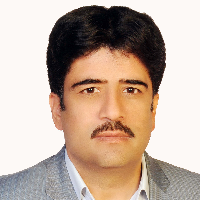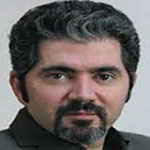Spatial Analysis of Smart City Indicators Based on the Internet of Things (IoT) in the Metropolis of Mashhad
The concept of a smart city involves utilizing information and communication technology to improve the livability and sustainability of urban areas and unique locations, thereby promoting innovation and entrepreneurship. The extensive use of digital sensors and control systems for managing urban infrastructure has led to the development of various applications with the Internet of Things (IoT) playing a crucial role in enabling new services and enhancing interaction levels. As this technology continues to progress, it holds the potential to transform every aspect of human life. This research aimed to conduct a spatial analysis of smart city indicators, particularly those related to the IoT across 13 regions of Mashhad metropolis. This study took an applied approach with a descriptive-analytical nature by utilizing both documentary (library) and field (questionnaire) data collection methods. The sample consisted of residents from 13 regions within Mashhad metropolis with a sample size of 171 questionnaires determined based on the 2016 population of 3,062,242. The questionnaires were distributed proportionately across each region. The data analysis was conducted by using SPSS software and decision-making methods, such as MEREC and COCOSO. Furthermore, the structural equation modeling approach (Smart PLS) was employed for a comprehensive analysis. The research findings indicated that Regions 9, 1, and 4 showed the highest levels of smart city indicators based on IoT in Mashhad, while Regions 3, 12, and 10 exhibited the lowest levels. According to the results of the PLS structural equation modeling test, the variable of smart governance showed the highest overall impact coefficient (1.523) on the IoT-based smart city followed by smart economy (1.256), smart citizen (0.895), smart environment (0.687), smart mobility (0.622), and smart living (0.160).
A smart city is a sophisticated ecosystem that leverages advanced information and communication technologies to enhance the appeal and sustainability of urban areas and distinctive locations, fostering innovation and entrepreneurship. The widespread adoption of digital sensors and control systems for managing urban infrastructure has facilitated various applications with the Internet of Things (IoT) emerging as a solution for delivering new services and enhancing interactive experiences. In recent years, the concept of smart cities has gained traction in Iran with cities, such as Urmia, Isfahan, Tehran, Mashhad, and Tabriz, being recognized as smart cities. Due to its rapid growth and development, as well as social, economic, and environmental changes in line with new needs, Mashhad City needs to provide services that are suitable and deserving for its residents, especially considering the significant number of domestic and foreign pilgrims, who visit the holy shrine of Imam Reza annually. Therefore, the indigenous capacities of the city alone are not sufficient for its development and the collaboration of various sectors, especially the communication and IT sectors, is necessary to elevate and progress it in new areas. Hence, this paper aimed to examine the distribution status of IoT-based smart city indicators in 13 districts of Mashhad municipality and answer the question of how the current status of IoT-based smart city indicators was in the mentioned districts.
This research was applied in terms of its objective and descriptive-analytical in terms of its nature and method. The data collection method included both documentary (library) and field (questionnaire) researches. The sample consisted of residents from the 13 districts of Mashhad metropolis. Cochran formula was used to determine the sample size for each district, resulting in a total of 171 questionnaires based on a coefficient of 0.075 and population of 3,062,242 in 2016. The questionnaire was designed in a 5-point Likert scale format and distributed and completed across the districts of Mashhad. The questionnaire was validated based on the input from university professors and the necessary modifications were implemented. After collecting the questionnaires and assessing their reliability using the Cronbach's alpha method, the gathered data were analyzed by using descriptive and inferential statistics, including the Chi-square test, skewness and kurtosis tests, and one-sample t-test, within the SPSS software environment. Additionally, decision-making methods, such as MEREC and COCOSO, were utilized for data and information analysis. Finally, the Smart PLS software was employed to construct the structural equation model and determine the impact levels of the desired indicators on the IoT-based smart city.
Upon confirming the normal distribution of the data through skewness and kurtosis tests, the results of the one-sample t-test indicated that all the indicators were significant. Among the IoT-based smart growth indicators, the first factor (smart mobility) exhibited the highest mean of 2.7154, while the component of smart citizen had the lowest score of 2.1287 compared to the other components. Following the weighting of the indicators by using the MEREC method and application of the COCOSO technique for ranking the districts, the results revealed that District 9 secured the 1st rank with a score of 3.412 and District 1 showed the 2nd rank with a score of 3.349 with the remaining districts following in subsequent ranks. Furthermore, the results of the structural equation modeling by using SMART PLS indicated that the variable of smart government exhibited the highest overall influence coefficient of 1.523 followed by smart economy (1.256), smart citizen (0.895), smart environment (0.687), smart mobility (0.622), and smart living (0.160), showcasing their influences in the IoT-based smart city.
A smart city represents a comprehensive framework that assesses various facets of intelligent initiatives, empowering cities to leverage urban networks, bolster their economic prowess, and establish more efficient systems. This network relies on wireless networks, broadcasting networks, internet networks, telecommunication networks, and sensor networks with the Internet of Things (IoT) at its core. The research findings were consistent with the conclusions of other researchers, such as Mafi and Gholizadeh (2015), Amelifar et al. (2022), and Sudeep et al. (2018), highlighting the impact of IoT in urban settings, resulting in savings in time, cost, energy, materials, and human resources, and ultimately enhancing the quality of urban life. The high rankings of Regions 9 and 1 in Mashhad metropolis in terms of smart city indicators validated this assertion as evidenced by the high quality of urban life in these areas and the residents' preference to live there.
-
Crime in rural settlements and its relationship with unemployment and access to facilities and infrastructure (Case study: rural settlements of Zanjan province)
*, Somaye Ghezelbash
journal of police Geography, -
Spatial Analysis of Road Network Implementation Indices in Rural Guidance Plans (Case Study: Villages of Shahrekord County)
*, Maryam Taheri
Journal Of Geography and Regional Development Reseach Journal, -
Analysis of the Effect of Social Components on the Housing Pattern of Turkmen Villagers(Case Study: Raz & Jargalan County)
*, Sanaz Imani
Journal of Geographical Studies of Mountainous Areas, -
The Obstacles and Challenges of Integrated Urban Governance (Case Study: Urmia City)
Mahdi Hosseinpour, *, Isa Piri
Journal of Sustainable Development of Geographical Environment,



